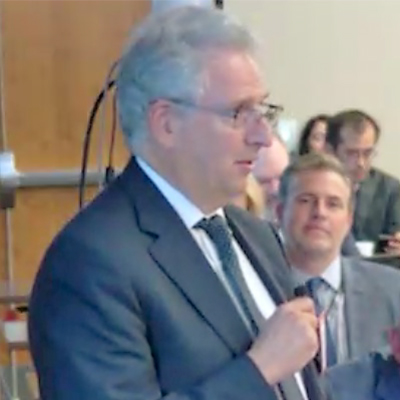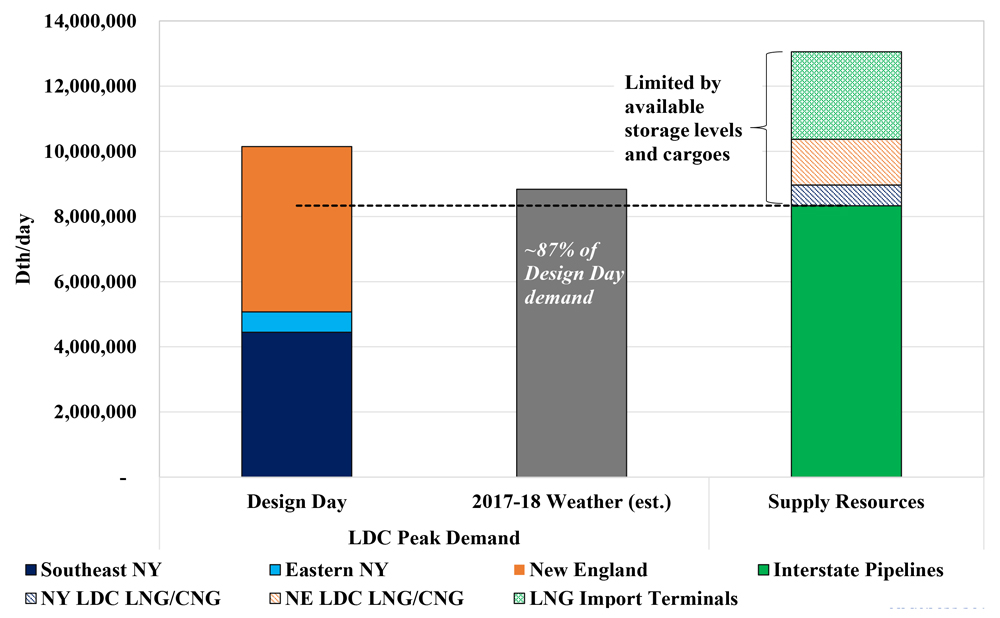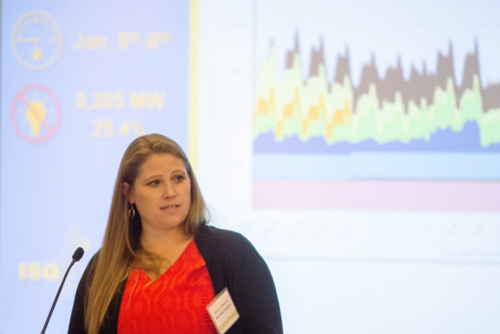FERC on Thursday ruled that it will deem companies it regulates as affiliates if one nominates its own members, investors or employees to another’s board of directors.
The commission issued two orders regarding separate transactions that both required it to determine whether the companies involved — TransAlta (NYSE:TAC) and Brookfield Asset Management (BAM) (NYSE:BAM) in one, and Bluescape Energy Partners and Evergy (NYSE:EVRG) in the other — were affiliates of each other. FERC applies stricter oversight of affiliated companies and their transactions to, for example, determine market-based rate authority and screen against market manipulation.
“It’s very important that we have the kind of insight to understand when parties are affiliated so we can do a better job of regulating” them, FERC Chair Richard Glick said during the commission’s monthly open meeting. “If one company … essentially names board members to another company [who are] affiliated with the first company, then we’re going to deem that an affiliate relationship.”
TransAlta and Brookfield
In one of the orders (EC22-45), the commission addressed an application for a change in control affecting Canada-based TransAlta, based on a shift in company holdings controlled by BAM, a global investment firm.
TransAlta has an extensive presence in U.S. electricity markets through its two power marketing divisions and its ownership of several wind assets and the 730-MW coal-fired Centralia Generation Station in Washington. BAM is affiliated with six power marketing companies in the U.S. and with other entities that own or control generation assets across the country.
In 2019, BAM affiliate Brookfield BRP Holdings (Canada) Inc. purchased debt securities in TransAlta with an option for converting to an equity interest in TransAlta’s hydroelectric assets in Alberta, Canada.
In their application to FERC, filed in March 2022, TransAlta and BAM said the debt securities did not confer any equity voting rights in TransAlta and are not convertible into an equity interest in any of TransAlta’s U.S. assets. But the transaction did result in the expansion of TransAlta’s board from 10 members to 12, two of which would be nominated by BRP while it holds the debt securities.
The debt securities agreement also included a “standstill agreement” that established barriers to control during a “standstill period” expected to end around May 1, 2022. That agreement included a number of provisions, including a restriction on BRP or its affiliates (including BAM shareholders) acquiring more than 19.9% of TransAlta’s shares, engaging in any takeover activities, effecting other restructurings and asset sales, and seeking to obtain additional representation on the board, among other activities.
“In addition, applicants state that the standstill agreement provides that any voting rights associated with shares in TransAlta owned by [BRP] or its affiliates must be exercised in favor of the board’s management nominees and voted in accordance with any recommendations by the board on all other proposals and matters, including director appointments and removals, at annual shareholder meetings,” FERC noted in its order. “Applicants argue that as a result, [BRP], shareholders and other BAM affiliates currently have no discretion to vote any common shares, except solely with respect to a board-recommended extraordinary transaction that would result in a person acquiring more than 50% of the outstanding common shares.”
The companies told FERC that BAM shareholders increased their aggregate holdings in TransAlta’s common shares to 10.1% in March 2020 and now own 13% of the shares. Before expiration of the standstill agreement, they sought the commission’s approval for BAM affiliates to own, with power to vote, 10% or more of common shares.
“Applicants state that because termination of the standstill agreement would result in a change in control over the TransAlta companies if shareholders, together with any other BAM affiliates, own 10% or more of the common shares, applicants request commission authorization for the proposed transaction and associated change in control over the TransAlta companies,” FERC wrote.
The companies contended that, despite BAM affiliates already exceeding 10% ownership, the standstill agreement ensured that BAM and its affiliates could not control TransAlta or its subsidiaries.
“Therefore, applicants argue that a change in control requiring prior commission approval will not occur until the expiration of the standstill provisions, anticipated to occur on or about May 1, 2022,” FERC wrote. “We disagree.”
The commission specifically disagreed with TransAlta and BAM citing FERC’s 2009 decision in Cascade Investment, L.L.C. (EC09-78) to support their contention that the initial investment that elevated BAM and affiliate ownership above 10% did not result in a change of control because of the limitations set out in the standstill agreement. It noted that the Cascade proceeding involved a standstill agreement that included provisions intended to restrict Cascade Investment’s ability to control a public utility through ownership in a holding company, Otter Tail Corp. Those provisions included limiting Cascade’s holding to less than 20% of Otter Tail’s voting securities, a commitment not to seek a seat on board of either Otter Tail Corp. or Otter Tail Power, and a commitment not to influence Otter Tail’s operations or the price at which it sold power.
The TransAlta/BAM proceeding differed in key ways, the commission said:
- The application in Cascade was filed before the acquisition of 10% or more voting securities in Otter Tail, whereas BRP and other BAM affiliates had acquired 10.1% of TransAlta in March 2020, which is above the threshold provided in FERC’s blanket authorization of such transactions.
- Unlike in Cascade, the BAM affiliates have placed two directors on TransAlta’s board, arguing that holding two seats is insufficient to gain control of the board given its large size and independent composition. But the commission pointed out that it has concerns with structures where the investor itself will be represented on the board, “which confers rights, privileges and access to nonpublic information, including information on commercial strategy and operations,” as noted in FERC’s other decision issued Thursday (see below).
- Although the TransAlta standstill agreement contains limitations on the ability of the affiliates to vote shares, it does not contain explicit prohibitions regarding the ability to influence the day-to-day operations of TransAlta, unlike in Cascade.
“We find that contrary to the requirements of [Federal Power Act] Section 203, applicants failed to file a timely request for the disposition of a public utility and acquisition of securities,” the commission wrote. “Specifically, applicants were required to receive commission approval prior to the acquisition by shareholders of greater than 10% of the outstanding TransAlta shares. While we take no further action here, applicants are reminded that they must submit required filings on a timely basis or face possible sanctions by the commission.”
Still, the commission did approve the companies’ application, finding the change in control would have no impact on competition, rates and regulation, nor would it result in cross-subsidization.
Bluescape and Evergy
In a similar proceeding, the commission found that Dallas-based Bluescape is “individually an affiliate” of Evergy and directed the Midwest utility’s operating companies to submit additional information within 30 days so that FERC can process a notice of change in status (ER20-67, ER20-113, ER20-116).
FERC said that Evergy’s appointment of C. John Wilder, Bluescape’s executive chairman, to its board of directors presented a “concern” the commission previously expressed in a proceeding involving CenterPoint Energy. The commission said then that it had an issue with “structures where the investor itself would be represented on the board through the appointment of the investor’s own officers or directors, or other appointee accountable to the investor, in order to support a finding of control.”
“Where an investor’s own officer or director … is appointed to the board of a public utility or holding company that owns public utilities, the investor itself will have those rights, privileges and access, and thus the authority to influence significant decisions involving the public utility or public utility holding company,” FERC said. “As a result, we find that the appointment of a non-independent director from Bluescape to the Evergy board rebuts the presumption of lack of control … and that Bluescape is deemed to be an affiliate of Evergy.”
The commission directed Evergy’s subsidiaries to update their asset appendix with all of Bluescape’s energy affiliates and their associated assets, as well as their horizontal and vertical market power analysis with their affiliates’ generation and transmission assets and inputs to electric power production.
Evergy’s subsidiaries in September 2020 filed a notice of change in status regarding changes to their upstream ownership. This came shortly after Evergy said it would remain a standalone company after exploring several purchase offers by other companies. (See Evergy Releases Standalone Plan Details.)
FERC twice filed deficiency letters in 2021 requesting more information on the upstream ownership. Public Citizen and the Communications Workers of America filed a joint protest in November 2021.
In its Thursday order, the commission found another investment management firm, Elliott Management, was not an Evergy affiliate. It said the record indicated Elliott owns less than 10% of Evergy’s outstanding voting securities and said Public Citizen did not present enough evidence to rebut the presumption of lack of control under federal regulations.
FERC ruled that Elliott’s appointment to Evergy’s board, former U.S. Sen. Mary Landrieu (D-La.), is independent and not compensated by Elliott.
Wilder and Landrieu were named to the board in February 2021, with Wilder also chairing the Finance Committee.
Tyson Slocum, director of Public Citizen’s Energy Program, still applauded the ruling as a “a win for consumers, market integrity and protection from corporate raiders.”
“For utilities with captive ratepayers, all affiliates can only engage in financial transactions with the utility at arm’s length,” Slocum said in a statement. “This prevents an investor from selling services at inflated costs, and then having the utility recover those inflated costs from ratepayers. Today’s order ensures that banks, hedge funds and private equity funds that seek to control a utility’s board cannot engage in such abusive practices.”
Speaking to reporters after the commission’s meeting, Glick said, “This is about consumer protection. If you have affiliates engaging in self-dealing, and we have no way of knowing it or seeing it because we don’t consider two entities affiliates, we’re not going to be able to protect consumers adequately enough.” He also said the rulings would provide certainty to companies so that they know when they would be considered affiliates.
 FERC Chair Richard Glick speaks before SPP’s board and stakeholders. | SPP
FERC Chair Richard Glick speaks before SPP’s board and stakeholders. | SPP

